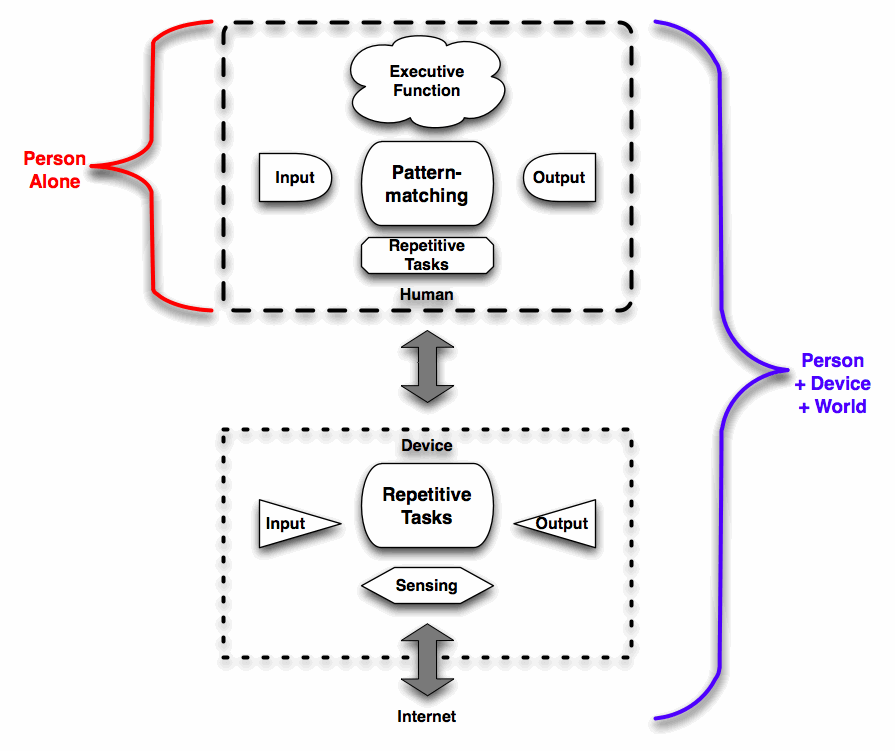The post I did yesterday on Distributed Cognition also triggered another thought, about the augmented learner. The cited post talked about how design doesn’t recognize the augmented performer, and this is a point I’ve made elsewhere, but I wanted to capture it in a richer representation. Naturally, I made a diagram:
 If we look at our human capabilities, we’re very good pattern matchers, but pretty bad at exercising rote performance. So we can identify problems, and strategize about solutions, but when it comes to executing rote tasks, like calculation, we’re slow and error prone. From the point of the view of a problem we’re trying to solve, we’re not as effective as we could be.
If we look at our human capabilities, we’re very good pattern matchers, but pretty bad at exercising rote performance. So we can identify problems, and strategize about solutions, but when it comes to executing rote tasks, like calculation, we’re slow and error prone. From the point of the view of a problem we’re trying to solve, we’re not as effective as we could be.
However, when we augment our intellect, say with a networked device (read: mobile), we’re augmenting our problem-solving and executive capability with some really powerful calculations capability, and also some sensors we’re typically not equipped with (e.g. GPS, compass), as well as access to a ridiculously huge amount of potential information through the internet, as well as our colleagues. From the point of view of the problem, we’re suddenly a much more awesome opponent.
And that is the real power of technology: wherever and whenever we are, and whatever we’re trying to do, there’s an app for that. Or could be. Are you empowering your performers to be awesome problem-solvers?
Good software should monitor repetitive situations, and bring outliers to the attention of the human. It should offer suggestions in the form of job aids, case studies, and previous situations that have similar characteristics to help in decision making.
This is pretty much how the military flies Predator drones from 12,000 miles away over a satellite. I’ve seen some of the systems they use, and the operator pretty much just gives “guidance” because of the time lag.
This is an area I’m particularly interested in especially from the perspective of organisational learning design and capability development interventions. I particularly love the term augmented learner. As technology becomes more embedded in our lives, the augmented consciousness that results must surely be a critical consideration in the design of learning interventions. As a relatively early adopter of technology and a fan of social media, I find the rate of development of the likes of Google, Microsoft and Apple’s desktop and mobile technologies indicating clearly the need to focus more attention on cognitive and metacognitive strategies. This is especially important in workplace learning where learning impact is expected to be seen in staff performance and success of organisation or business strategy.
This also calls for a new approach to the design of the learning evironment and even importantly the workplace.
Found this blog using the regator iPhone app. This comment was posted using the iPhone at the airport while having dinner. :)
Great thoughts from both of you. Dick, yes, it’s distributing the task across the components in ways that optimize each’s ability to contribute.
And, yes, Dehumob, I very much think it has implications for not only our tech design, but our learning design and our organizational design! I’m impressed that you could use the iPhone to write this; I sure wish it had an optional bluetooth keyboard!